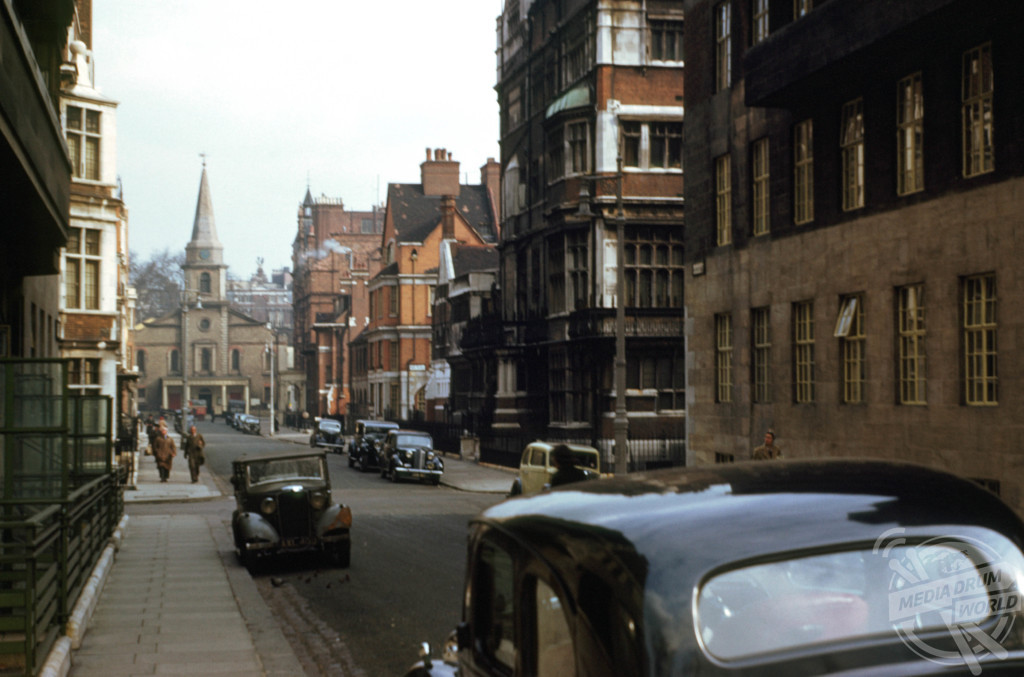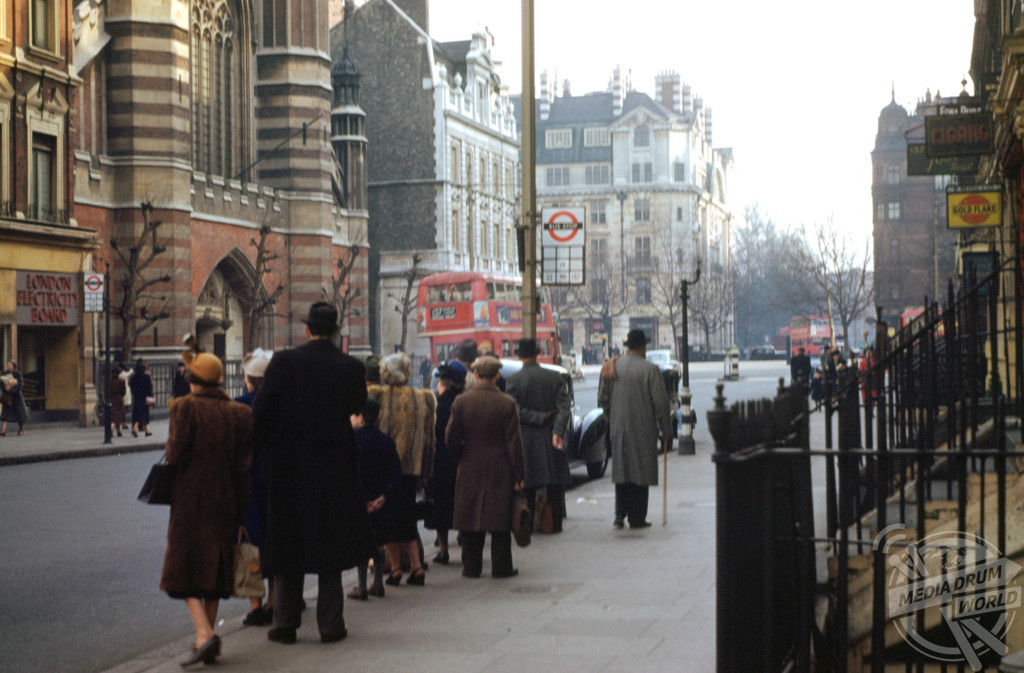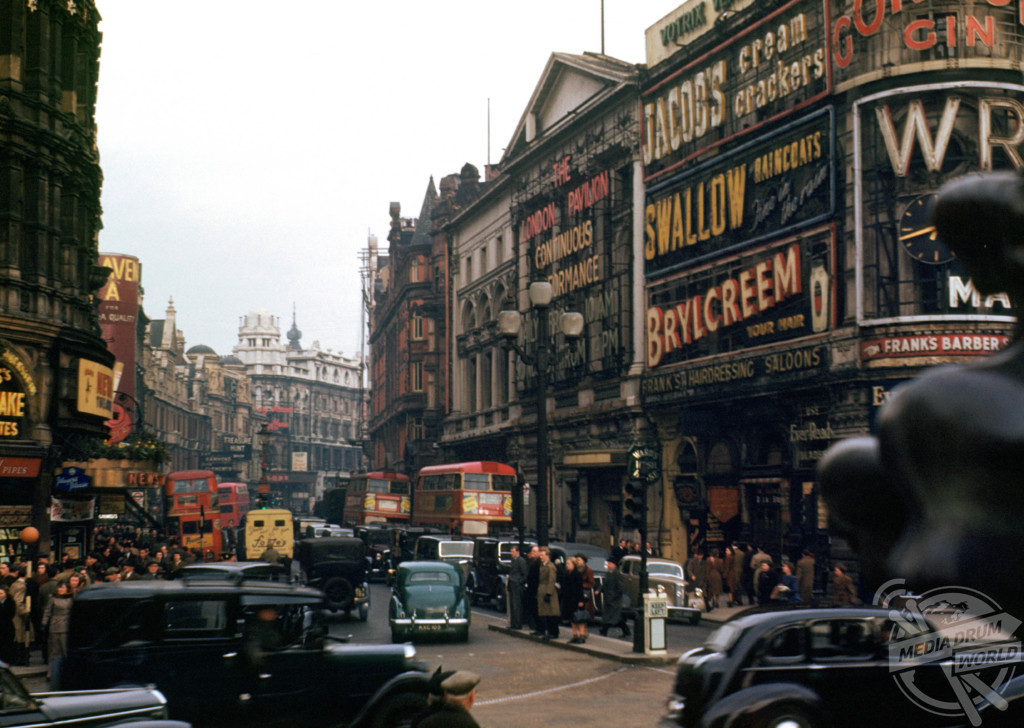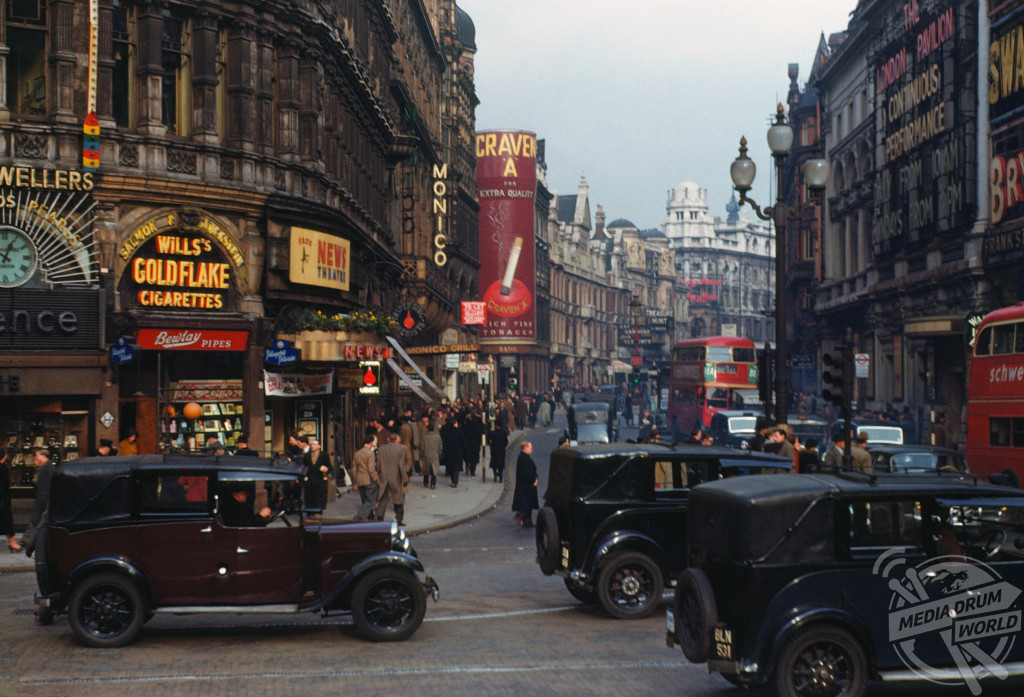By Mark McConville
THE BEAUTY of 1940s London has been revealed in a series of rare colour photographs from the era.
The stunning pictures show cars and the famous red double-decker buses travelling down Shaftesbury Avenue from Piccadilly Circus with advertisements for Brylcreem and Jacob’s Cream Crackers clearly visible.

Retronaut / mediadrumworld.com
Other incredible images show people waiting at a bus stop on Sloane Street and cars parked on Aldford Street as people walk to church.
The Kodachrome pictures were taken in 1949 by a man called Chalmers Butterfield in a rare instance of colour photography in Britain around this time.
Although colour photography dates back to the end of the nineteenth century, it is rare to see Kodachrome images of London from the 1940s.

Retronaut / mediadrumworld.com
Black and white photography was very much still the predominant photographic process, and Kodachrome – the leading colour process, created in America by Kodak – remained elusive in Britain, particularly in the era of immediate post-war austerity.
Kodachrome is a brand name for a non-substantive, colour reversal film introduced by Eastman Kodak in 1935. It was one of the first successful colour materials and was used for both cinematography and still photography. For many years Kodachrome was widely used for professional colour photography, especially for images intended for publication in print media.

Retronaut / mediadrumworld.com
Due to the growth and popularity of alternative photographic materials, its complex processing requirements, and the widespread transition to digital photography, Kodachrome lost market share. Its manufacture was discontinued in 2009, and processing ended in December 2010.







